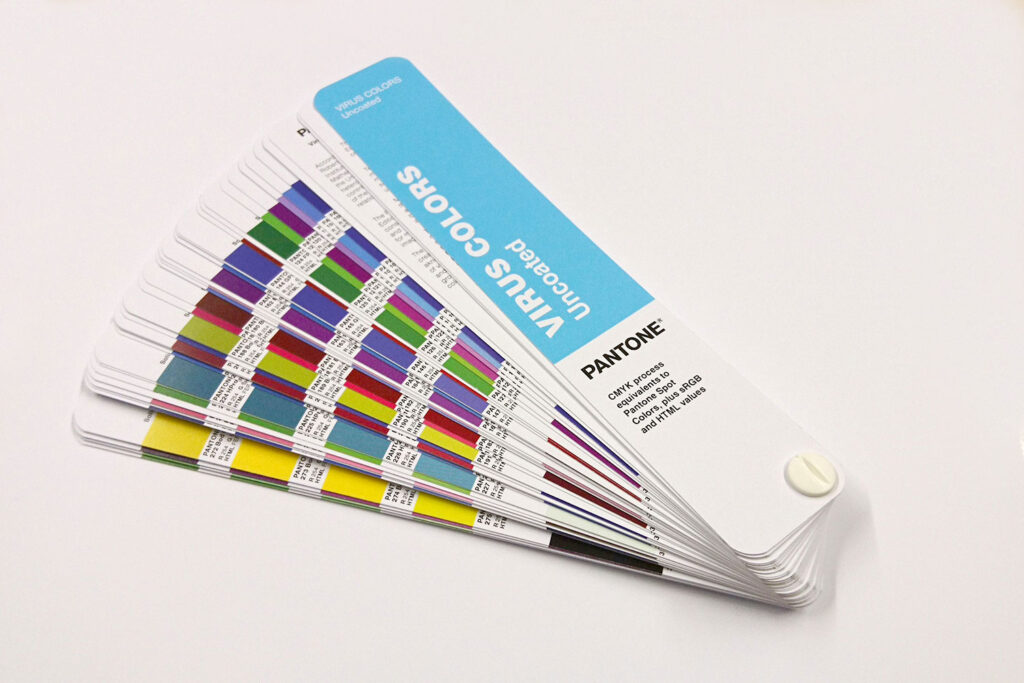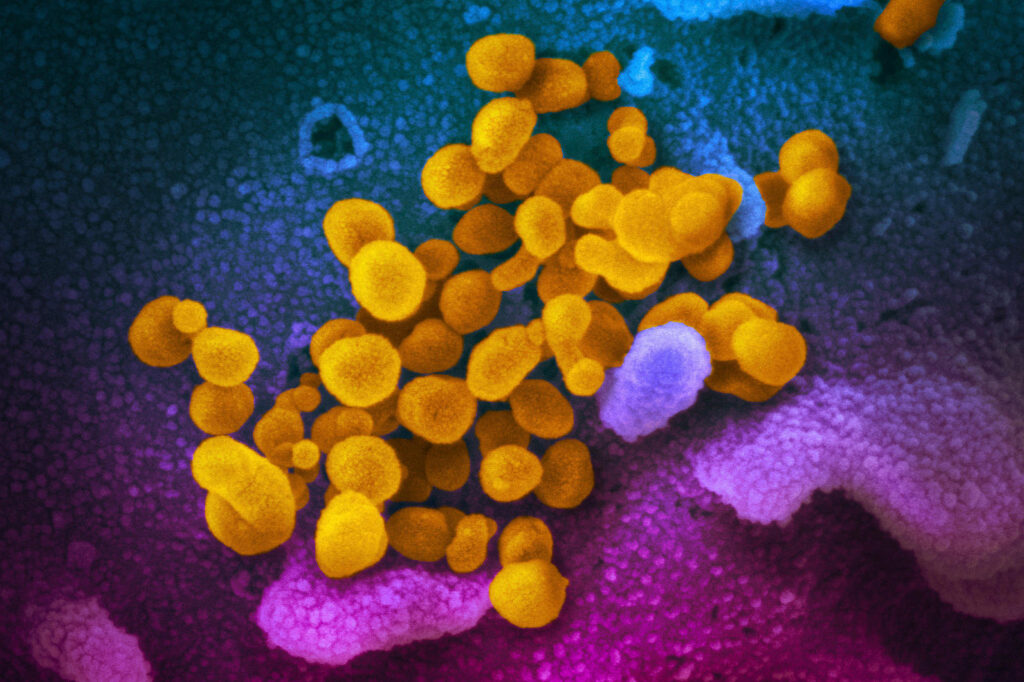
The Pantone Virus Colors Edition serves as a tool for creators of virus imagery.
Most viruses are smaller than the wavelength of visible light, and can therefore not only not be seen, they also don’t have any colour. Technologies like electrone microscopy provide the means to picture submicroscopic particles that are usually too small to be seen. Transmission electrone microscopy (TEM) as well as scanning electrone microscopy (SEM) render images by shooting electrones on particles and create gray scale pictures of nano forms.
To make those images more understandable, both for the scientific and non scientific audience, these images might be artificially coloured in another step. Different stakeholders have different motivations: scientists use colour to distinguish between different structural parts of the virus or the virus and an infected cell, while graphic designers or journalists have interest in the effect of their visual appearance. But even scientists become more aware of the power of beautiful virus images and use them to boost their funding. The Wellcome Trust pays tribute to the most interesting scientific images and honors them with the Wellcome Image Award.
The choice of colour is always up to the person who designs the image, which in turn creates an extreme variety of false coloured virus images. According to the researcher Roberta Buiani of The Fields Institute for Research in Mathematical Sciences at the University of Toronto, does the heterogeneity of those images contribute to the uncertainty of the non scientific public in relation to viruses.
The Pantone Virus Colors Edition adresses the lack of a consensus on colour choice and provides a starting point for more consistent virus imagery. The aim is not to erase the creative process but to acknowledge the importance of visually appealing images and to provide a common ground for the choice of colour for image creators.




